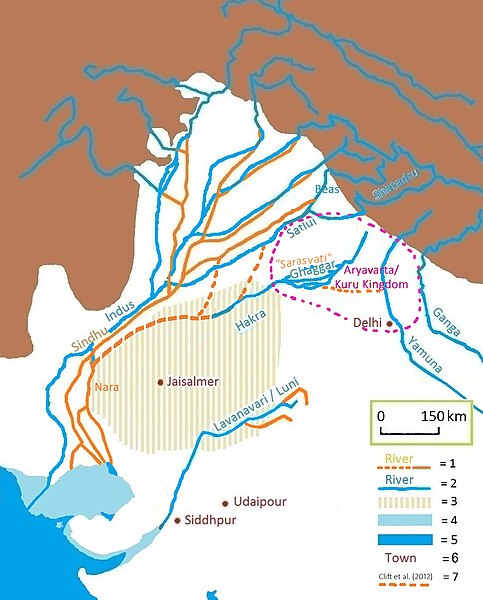Adi Badri, also Sri Sarasvati Udgam Tirath, is a tourist site of archaeological, religious and ecological significance in a forest area in the foothills of the Sivalik Hills in Bhabar area, situated in northern part of Yamunanagar district, of the north Indian state of Haryana. There are remains of many Buddhist stupas and monasteries, which are about 1500–2000 years old, and there is also a group of Hindu temples from the 9th century. Based on the multiple archaeological excavations undertaken here, archaeologists have sent the proposal to Archaeological Survey of India (ASI) to include this site in the list of protected heritage site. Several popular annual festivals are held here, including the five day long National Saraswati Festival in January, Adi Badri Akha Teej Mela in Vaisakh around April–May, week-long Adi Badri-Kapal Mochan Kartik Purnima religious mela around November.
Kapal Mochan Sarovar and Gau-Bacha Temple
Meditation cell at Adi Badri
Sarasvati ancient path
The Sarasvati River is a mythologized and deified ancient river first mentioned in the Rigveda and later in Vedic and post-Vedic texts. It played an important role in the Vedic religion, appearing in all but the fourth book of the Rigveda.
Vedic and present-day Gagghar-Hakra river-course, with Aryavarta/Kuru Kingdom, and (pre-)Harappan Hakkra/Sutlej-Yamuna paleochannels as proposed by Clift et al. (2012) and Khonde et al. (2017). See also this satellite image. 1 = ancient river 2 = today's river 3 = today's Thar desert 4 = ancient shore 5 = today's shore 6 = today's town 7 = dried-up Harappan Hakkra course, and pre-Harappan Sutlej paleochannels (Clift et al. (2012)).
Painting of Goddess Saraswati by Raja Ravi Varma
Triveni Sangam, Allahabad – the confluence of Ganga, Yamuna and the "unseen" Sarasvati.
Vedic rivers






